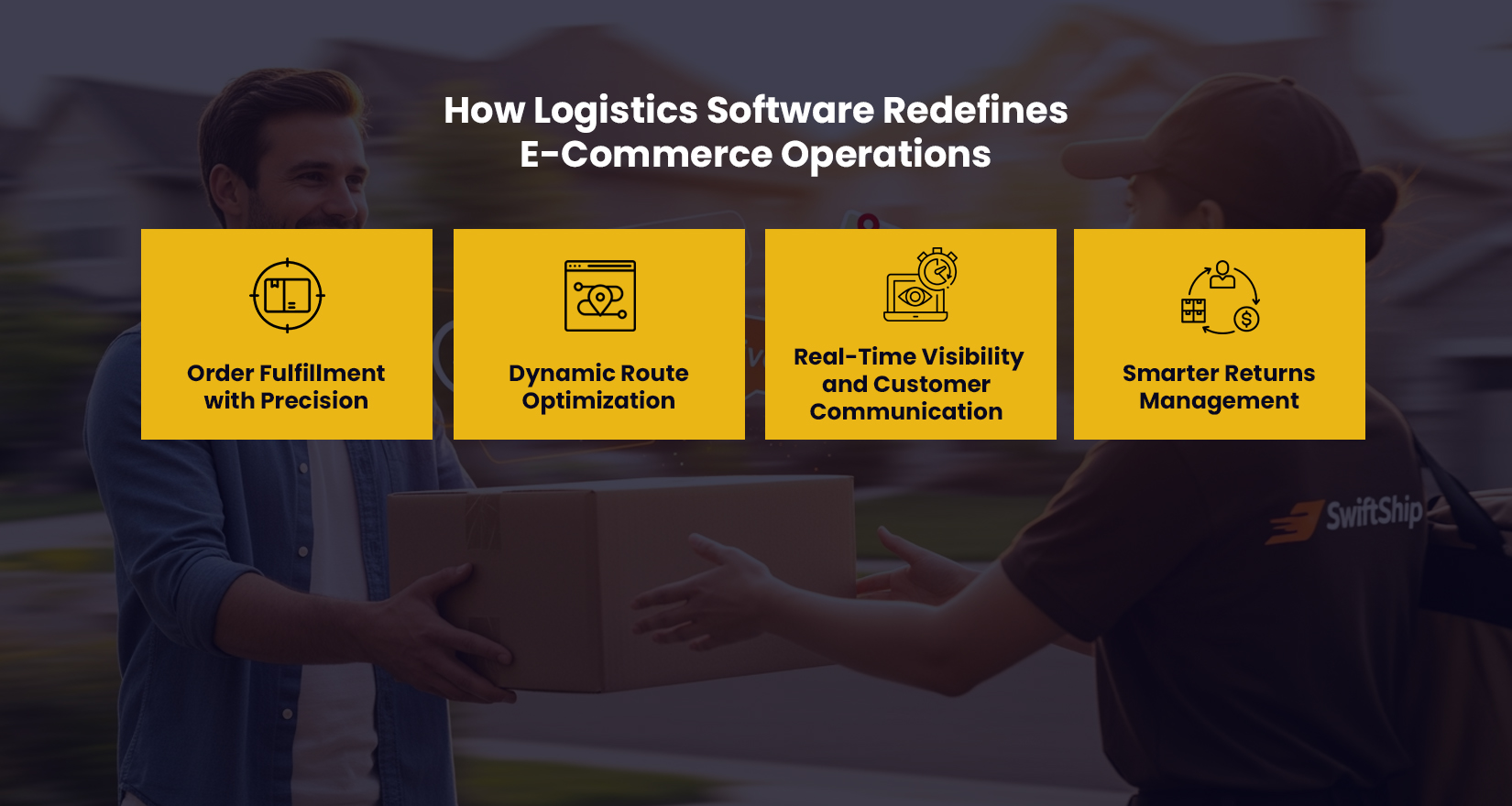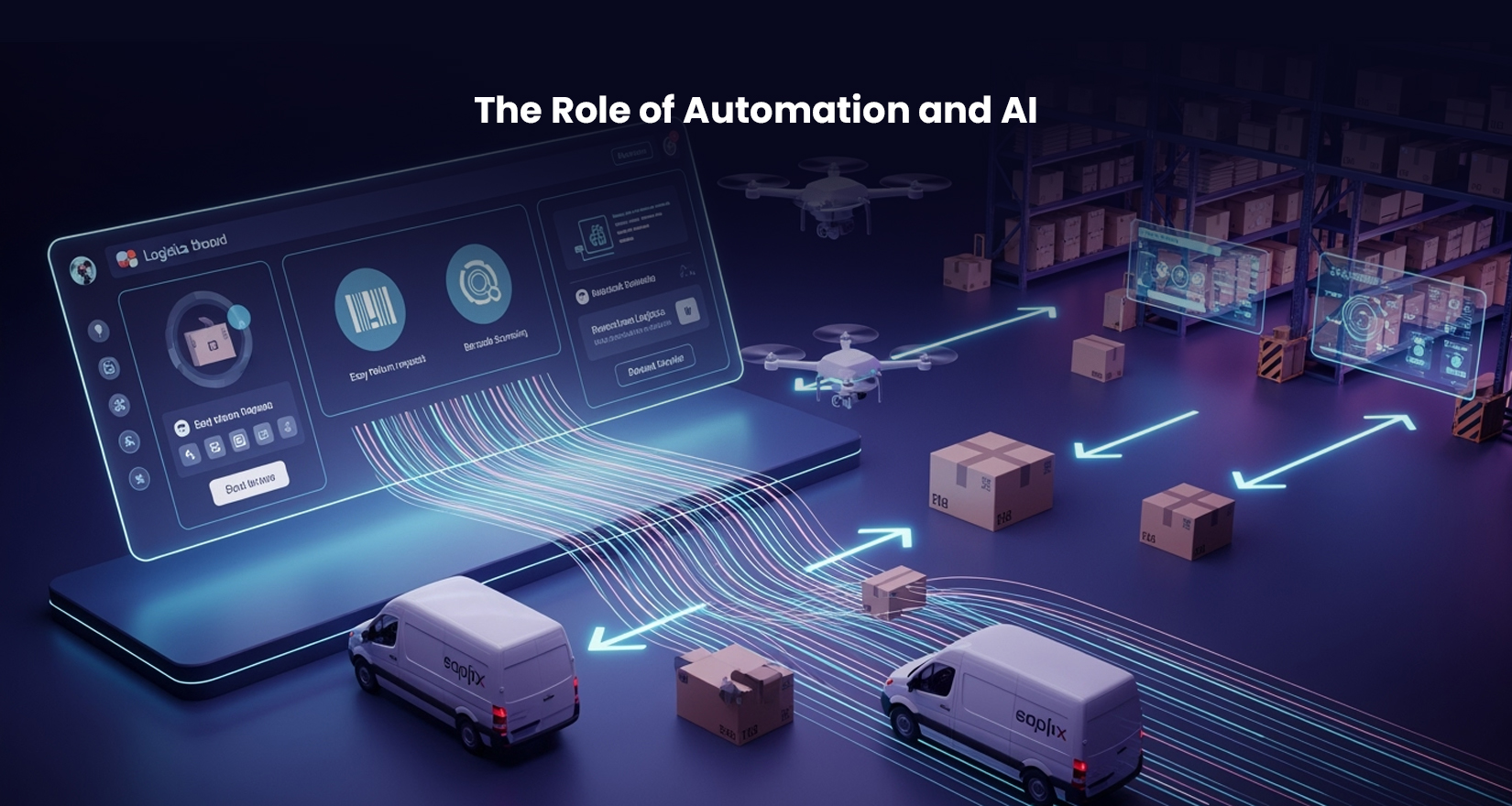
The Post-Purchase Battlefield: How Logistics Software Defines E-Commerce Loyalty
In our instant gratification society, e-commerce does not end when someone presses “Buy Now,” but in fact initiates a new battle: the post-purchase battlefield. The spot where promises collide with performance and customer loyalty is either gained or forfeited. What are our weapons in this war? Precision, speed, and visibility using ample logistics software.
The simple fact is, consumers today live not only for fast delivery, but also for seamless tracking and returns. A report from PwC reports that 41% of consumers will pay more for same day delivery, and 73% row that “the delivery experience has a factual impact on loyalty.” For e-commerce brands, this is not merely logistics: it is the life or death of the brand.
The Post-Purchase Experience: The True Loyalty Test
The competitive landscape of e-commerce has changed. It’s no longer just about having the most attractive website or the best discount available. It is about the delivery experience that earns customer loyalty.
If we are honest about it, a seamless checkout process means nothing with a late delivery, damaged goods, or a lost package. The reverse is also true if there is a slight problem with an order delivery that erodes trust earned. However, when deliveries occur seamlessly, it creates a repeat purchase opportunity.
This is where logistics management software functions as the foundation of your post-purchase experience. It ties together order fulfillment, warehousing, carrier communication, and delivery tracking, all within one ecosystem. It allows business to offer more than a package, it provides predictability and peace of mind.
How Logistics Software Redefines E-Commerce Operations

Modern e-commerce logistics software is far more than a tracking tool. It’s an intelligent orchestration platform, optimizing every mile from warehouse to doorstep. Let’s break down how it transforms each layer of the e-commerce chain:
1. Order Fulfillment with Precision:
E-commerce logistics puts a premium on precision. According to a survey conducted by Convey – to highlight, 84% of consumers will not patronize your brand again after a single delivery mishap. By utilizing advanced logistics software, a business can automate the process of picking orders. Also, confirm addresses by geocoding them, and verify the right parcel is being sent to the right location, the first time.
2. Dynamic Route Optimization:
Delays prove to be costly for brands beyond their monetary value: they give way to the loss of loyalty. AI logistics management software enables dynamic updates to delivery routes, factoring in weather conditions, traffic, and the drivers’ schedules. Optimized delivery provides speedy deliveries while decreasing the cost of fuel. In peak shopping seasons, when efficiency is of utmost importance, the same software ensures relatively timely deliveries as well.
3. Real-Time Visibility and Customer Communication:
The consumer of today isn’t fond of the “out-of-sight, out-of-mind” ideology. They wish for the most up-to-date information available, not excuses for inconvenience. Typically integrated within logistics software, delivery tracking resources provide customers an active view of shipment delivery status, its ETA, and driver contact information. Transparency builds trust, and trust drives recurring business.
4. Smarter Returns Management:
Returns are simply a part of e-commerce, especially for fashion and electronics; with the latter two, the average return rate can be as high as 30% – in online retail. A logistics solution that is designed to not only provide but expedite reverse logistics. By granting customers the ability to automate the return pickup request, create return shipping labels, and process all necessary refunds into purchased goods. A no-hassle return policy can rethink the mentality of a rather negative or disgraceful experience into courageous confidence.
Data-Driven Logistics: The Competitive Advantage
The most intelligent e-commerce players utilize data not only to respond but also to anticipate. By using logistics management software, e-commerce businesses are able to obtain analytics on delivery performance, customer satisfaction, and identify bottlenecks in the logistics supply chain.
Specifically, the analytics enables brands to:
– Anticipate spikes in demand in holiday seasons
– Optimize placement of inventory in warehouses
– Identify under-performing routes and partners
– Customize delivery options for high-end customers
Through making logistics data-driven, e-commerce brands can keep ahead of customer expectations, instead of falling further behind.
Case in Point: Amazon’s Logistics Mastery
Amazon did not achieve its e-commerce dominance by chance. The true superpower of Amazon is its logistics ecosystem, which includes warehouses, predictive analytics, and optimized last-mile delivery. When it uses its own logistics software, Amazon delivers more than 95% of Prime deliveries on-time and that continues to set the standard in the industry.
What Amazon teaches us is that logistics is no longer a backend operation. It is now a frontline strategy that seeks to delight customers!
The Role of Automation and AI

The future development of e-commerce logistics centers around automation and artificial intelligence. Businesses can automate dispatch scheduling, delivery delay predictions, and resource allocation with AI-driven e-commerce logistics software.
For instance:
– Machine-learning algorithms can automatically analyze past delivery data to increase the efficiency of future deliveries/routes.
– AI-powered chatbots can answer real-time customer questions about delivery related issues.
– Predictive analytics enable businesses to notify customers of potential order delays before they happen.
Automation and AI-driven logistics doesn’t just enhance business efficiency, it transforms the customer experience from reactive to anticipatory.
Investing in the Right Logistics Solution
Selecting an appropriate logistics solution is not merely a standard operating decision; it is a strategic decision. Businesses should evaluate software on scalability, integration capabilities, the depth of analytics, and customer support.
A top-tier logistics management software should:
– Integrate seamlessly with e-commerce platforms such as Shopify, Magento, or WooCommerce.
– Provide real-time tracking dashboards.
– Support forward and reverse logistics.
– Provide AI-powered route and capacity optimization.
– Deliver insights that can be used to improve the delivery experience.
When logistics becomes smarter, loyalty becomes natural.
Conclusion
The area after the purchase is where e-commerce brands either gain life-long advocates, or they lose customers for good. Logistics software is the secret weapon in that battle. Logistics software is the peacekeeping machinery that works to ensure every delivery creates an experience customers were expecting, every update builds trust in your brand, and every delivery experience builds and maintains reliability.
To say that customer experience is the new currency, is an understatement. Logistics is more than just transporting unnecessary goods; it’s making a connection, one on-time delivery at a time. So, its right time to get with and take the edge. Click on the red button below and book a demo with LogiNext Solutions.
25







@LogiNext